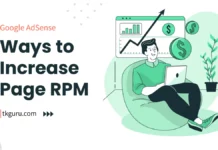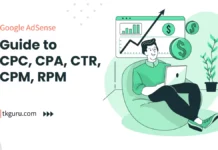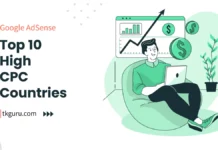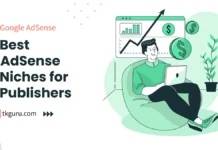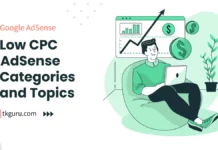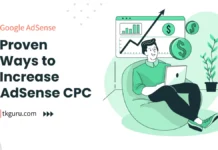Advertisements
Ratings
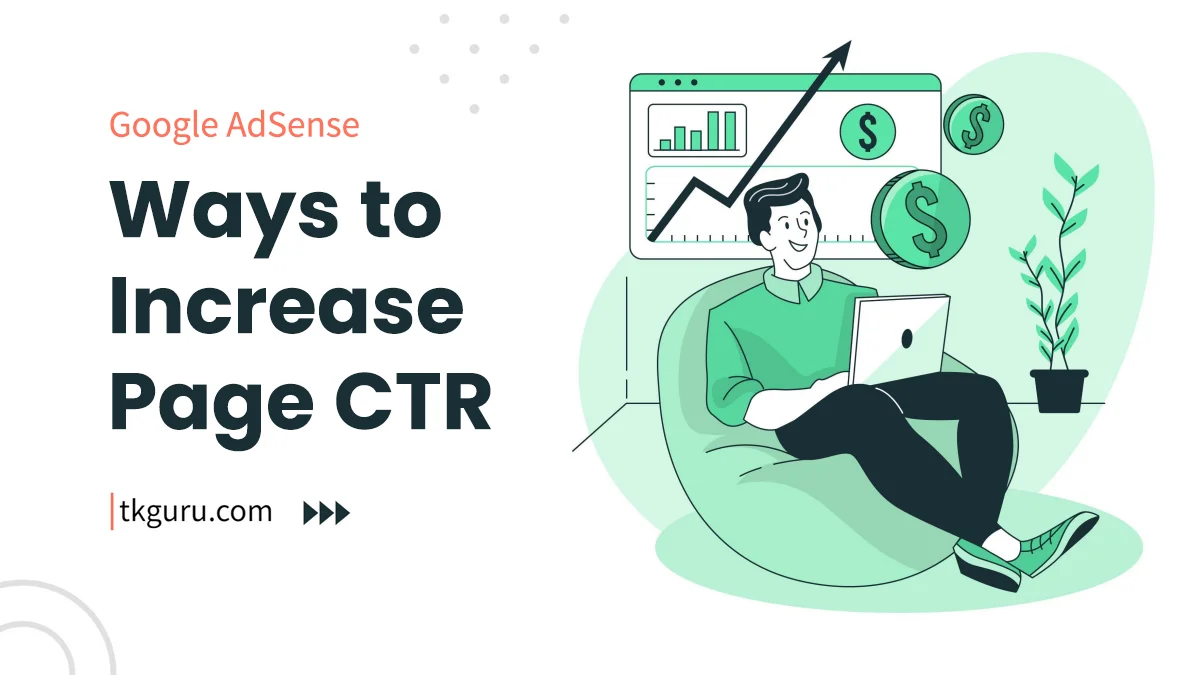
Increase Page CTR – In the world of digital marketing, the Click-Through Rate (CTR) is a metric of paramount importance.
CTR measures the effectiveness of your content, ads, and emails in enticing users to take action, whether it’s clicking a link, viewing a video, or making a purchase.
A higher CTR signifies a more engaging and successful campaign. This article delves into ten proven strategies that can boost your Page CTR by a significant 50%.
From crafting compelling headlines to leveraging social proof, we’ll explore techniques that can supercharge your click-through rates, leading to improved traffic, conversions, and overall digital marketing success.
Contents
1. Understanding Click-Through Rate (CTR)
Before diving into strategies to boost your CTR, let’s ensure we have a solid understanding of what CTR is and why it matters.
What is CTR?
CTR, or Click-Through Rate, is a metric that measures the number of clicks a specific link, ad, or call-to-action (CTA) receives, divided by the number of times it was shown (impressions). It’s typically expressed as a percentage.
Why Does CTR Matter?
CTR is a crucial metric in digital marketing because it gauges the effectiveness of your content, ads, or email campaigns.
A high CTR indicates that your message resonates with your audience and compels them to take action, which can include clicking through to your website, engaging with your content, or making a purchase.
A 50% increase in CTR can lead to significantly more traffic and conversions, making it a goal worth pursuing.
2. Ways to Increase Page CTR
2.1 Craft Compelling Headlines
Compelling headlines are the first point of contact between your content and your audience. They play a pivotal role in enticing users to click and explore further.
Table 1: Strategies for Crafting Compelling Headlines
| Strategy | Description | Benefits |
|---|---|---|
| Use Strong Words | Incorporate powerful and emotionally charged words that capture attention. | Evokes curiosity and compels users to click for more information. |
| Be Specific | Clearly communicate what users can expect to find in your content or ad. | Reduces ambiguity and attracts users genuinely interested in your topic. |
| Ask Questions | Pose thought-provoking questions that prompt users to seek answers in your content. | Engages users’ curiosity and encourages them to click for solutions. |
| Create Urgency | Use time-sensitive language to convey that the information is timely and valuable. | Encourages immediate action, especially for limited-time offers or news. |
2.2 Create Engaging Visual Content
Visual content, including images, infographics, and videos, has the power to capture attention and enhance user engagement. Incorporating visual elements effectively can significantly boost your CTR.
Table 2: Strategies for Creating Engaging Visual Content
| Strategy | Description | Benefits |
|---|---|---|
| Use High-Quality Images | Include visually appealing and relevant images that enhance your content’s appeal. | Attracts users, increases content appeal, and encourages further exploration. |
| Craft Informative Infographics | Create visually compelling infographics that simplify complex information. | Increases information retention, engages users, and encourages sharing. |
| Utilize Attention-Grabbing Thumbnails | Choose captivating video or article thumbnails that entice users to click. | Improves video and article discoverability, leading to more clicks. |
| Incorporate Interactive Elements | Add interactive elements like quizzes, polls, or interactive graphics to engage users. | Enhances user participation and increases time spent on your content. |
2.3 Optimize Meta Titles and Descriptions
Meta titles and descriptions are your content’s first impression in search engine results and social media shares. Optimizing them can significantly impact your CTR.
Table 3: Strategies for Optimizing Meta Titles and Descriptions
| Strategy | Description | Benefits |
|---|---|---|
| Use Relevant Keywords | Incorporate target keywords that reflect your content’s topic and user search intent. | Improves search engine visibility, leading to more organic clicks. |
| Keep it Concise and Descriptive | Craft concise yet informative meta titles and descriptions that clearly convey content value. | Reduces user confusion and encourages clicks from users seeking specific information. |
| Add a Unique Selling Proposition (USP) | Highlight what makes your content or product unique in your meta description. | Differentiates your content from competitors and encourages curiosity-driven clicks. |
| Include a Call-to-Action (CTA) | Add a persuasive CTA in your meta description to prompt users to take a specific action. | Directs user behavior and increases the likelihood of clicks and conversions. |
2.4 Implement A/B Testing
A/B testing, also known as split testing, is a data-driven approach to improving your CTR. It involves comparing two versions of a webpage or content to determine which performs better.
Table 4: Benefits of A/B Testing
| A/B Testing Benefit | Description | Benefits |
|---|---|---|
| Data-Driven Decisions | A/B testing provides actionable data on what works and what doesn’t, allowing for informed decisions. | Optimizes headlines, visuals, and CTAs based on what resonates with your audience. |
| Continuous Improvement | Ongoing A/B testing ensures that your content evolves with changing user preferences and trends. | Keeps your content competitive, resulting in sustained CTR growth. |
| Improved User Experience | A/B testing often leads to better user experiences, indirectly impacting CTR through engagement. | Enhanced user engagement and satisfaction can lead to more clicks and interactions. |
2.5 Leverage Social Proof
Social proof is a psychological phenomenon where people tend to follow the actions of others when they are uncertain about what to do. Leveraging social proof in your content can boost trust and CTR.
Table 5: Ways to Leverage Social Proof
| Social Proof Strategy | Description | Benefits |
|---|---|---|
| User Reviews | Showcase positive user reviews or testimonials to build credibility and trust. | Boosts user confidence, increasing the likelihood of clicks and conversions. |
| Endorsements | Highlight endorsements or recommendations from authoritative figures or organizations. | Increases trust and perceived value, leading to more click-throughs. |
| User-Generated Content | Encourage users to create and share content related to your brand or products, showing community engagement. | Demonstrates a thriving user community and attracts user-generated content. |
2.6 Utilize Clear Call-to-Action (CTA)
A clear and compelling Call-to-Action (CTA) guides users on the next steps to take. Optimizing your CTA can lead to more clicks and conversions.
Table 6: Tips for Creating Effective CTAs
| CTA Optimization Tip | Description | Benefits |
|---|---|---|
| Be Clear and Specific | Use concise and direct language that tells users exactly what action to take (e.g., “Shop Now” or “Sign Up”). | Reduces user confusion and encourages action. |
| Create a Sense of Urgency | Add urgency to your CTA with words like “Limited Time Offer” or “Act Now” to prompt immediate action. | Increases the likelihood of immediate clicks and conversions. |
| Use Action-Oriented Language | Employ action verbs that motivate users to take immediate steps (e.g., “Get Started” or “Request a Quote”). | Promotes user engagement and click-throughs. |
| Highlight Value Proposition | Communicate the value users will receive by clicking the CTA (e.g., “Save 20%” or “Unlock Exclusive Content”). | Increases user motivation and the perceived benefit of clicking. |
2.7 Enhance Mobile Responsiveness
With the increasing use of mobile devices, ensuring your content is mobile-responsive is crucial for CTR optimization.
Table 7: Mobile Optimization Strategies for CTR
| Mobile Optimization Strategy | Description | Benefits |
|---|---|---|
| Responsive Design | Ensure your website and content adapt seamlessly to various screen sizes and devices. | Enhances user experience and encourages mobile users to click and engage. |
| Mobile-Friendly Ad Units | Use ad units specifically designed for mobile devices, ensuring they display correctly and attractively. | Improves ad visibility and engagement on mobile platforms, leading to more clicks. |
| Reduce Load Times | Optimize your content and ads to load quickly on mobile devices, reducing bounce rates and improving CTR. | Keeps mobile users engaged and encourages further interaction. |
2.8 Personalize User Experiences
Personalization tailors content and recommendations to individual user preferences, increasing user engagement and CTR.
Table 8: Strategies for Personalizing User Experiences
| Personalization Strategy | Description | Benefits |
|---|---|---|
| User Segmentation | Divide your audience into segments based on demographics, behavior, or preferences, and deliver tailored content. | Increases relevance and encourages click-throughs from segmented users. |
| Behavioral Targeting | Analyze user behavior and serve personalized content and recommendations based on their past interactions. | Enhances user engagement and encourages click-throughs. |
| Dynamic Content | Implement dynamic content that adapts based on user data, such as location or browsing history, to create a personalized experience. | Improves content relevance and encourages interaction. |
2.9 Monitor and Analyze User Data
Regularly monitoring and analyzing user data is essential for understanding user behavior, preferences, and trends.
Table 9: Data Monitoring and Analysis Benefits
| Data Monitoring and Analysis Benefit | Description | Benefits |
|---|---|---|
| Informed Decision-Making | Data analysis provides insights into what resonates with your audience, helping you make informed content decisions. | Optimizes content elements like headlines, visuals, and CTAs based on user preferences. |
| Continuous Improvement | Ongoing data analysis ensures that your content evolves with changing user preferences and trends. | Keeps your content competitive, resulting in sustained CTR growth. |
| Enhanced User Experience | Data-driven improvements often lead to better user experiences, indirectly impacting CTR through engagement. | Enhanced user engagement and satisfaction can lead to more clicks and interactions. |
Conclusion
In conclusion, a 50% increase in Page CTR is an ambitious but achievable goal with the right strategies and a commitment to user-centric content and design.
By crafting compelling headlines, incorporating engaging visual content, optimizing meta titles and descriptions, conducting A/B testing, leveraging social proof, using clear CTAs, enhancing mobile responsiveness, personalizing user experiences, and continuously monitoring and analyzing user data, you can significantly boost your CTR, driving more clicks, engagement, and conversions.
Remember that CTR optimization is an ongoing process, and regularly monitoring your CTR performance will help you adapt to changing user behavior and preferences.
Start implementing these strategies today, and watch your Page CTR soar, resulting in improved traffic, conversions, and overall digital marketing success.
Ways to Increase Page CTR FAQs
What is Click-Through Rate (CTR), and Why is it Important?
Click-Through Rate (CTR) measures the percentage of users who click on a specific link or element out of those who view it.
It's important because it indicates the effectiveness of your content or ads in engaging and motivating your audience to take action.
What Are Some Effective Strategies for Increasing Page CTR?
Various strategies can help boost Page CTR, including crafting compelling headlines, using engaging visuals, optimizing meta titles and descriptions, incorporating clear CTAs, and conducting A/B testing.
How Can I Leverage Social Proof to Improve Page CTR?
Social proof, such as positive user reviews and endorsements from authoritative figures or organizations, can enhance trust and credibility, encouraging users to click through to your content.
Why Is Mobile Responsiveness Important for Page CTR?
Mobile responsiveness is crucial because a growing number of users access content on mobile devices.
Failing to optimize for mobile can lead to a poor user experience, higher bounce rates, and lower CTR.
How Does Personalization Impact Page CTR?
Personalization tailors content to individual user preferences through segmentation, behavioral targeting, and dynamic content. This enhances relevance and engagement, leading to higher Page CTR.
| Web Hosting | Website |
| WordPress | Google Adsense |
| SEO | Affiliate Marketing |
| Blogging | YouTube |
Recent Posts
- 9 Proven Ways to Increase Page CTR by 50%
- 9 Proven Ways to Increase Page RPM by 50%
- A Detailed Guide to CPC, CPA, CTR, CPM, RPM
- Top 10 High CPC Countries: Maximizing Ad Revenue in Lucrative Markets
Related Tags

